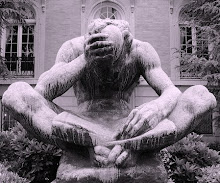It's that last point that I want to talk/rant about. Newt Gingrich, who seems hell-bent on making it impossible for himself to win the Republican nomination for 2012, rants that
"the proposed 'Cordoba House' overlooking the World Trade Center site--where a group of jihadists killed over 3000 Americans and destroyed one of our most famous landmarks--is a test of the timidity, passivity and historic ignorance of American elites"and for some reason goes on to compare our country to Saudi Arabia. As if we don't have to hold to our core beliefs until every theocracy in the world gets it together. I, personally, don't want to live in Saudi Arabia and am not really worried about comparing how well we're doing as a nation to it. Saudi Arabia operates with a different playbook, and nothing they do or don't do should affect how we, as a nation, behave in relation to our founding principles.
So that's my personal response to Gingrich's arguments. But there's a constitutional response, as well, to his argument that NYC has a right to deny the building of the Cordoba House. [NB: I think the headline for that link is misleading and a tad unethical. No doubt comparing anyone to Nazis brings with it a host of negative connotations (ask Ward Churchill or Marge Schott), but just because you compare a situation to Nazis doesn't necessarily mean you're comparing Muslims to Nazis. Even Gingrich.] As for that right to deny the Cordoba House? Not so, says Brian Palmer on Slate. I have to agree with Palmer's interpretation. The misunderstanding of the First Amendment is scary-prevalent these days. (Laura Schlessinger and Sarah Palin somehow think public outcry against something perceived as objectionable is a violation of free speech; just as it does not protect some hippie from getting thrown out of a Christian bookstore for wearing a pot-leaf t-shirt.)
What the First Amendment does say is that Congress shall make no law infringing on the freedom of speech and the "free exercise" of religion. If Congress can't make a law against it, that means the President (who is supposed to be the executor of laws) can't take any action against freedom of speech or religion. What that means is that a government agency (say, the FCC) can't shut Schlessinger up for saying words that the US Supreme Court hasn't ruled verboten; it also means that Obama, Bloomberg, or any other governmental agency cannot interfere with the establishment of the Cordoba House on religious grounds. It seems pretty clear to me, and I don't understand why someone like Palin would in one breath say the builders of the Cordoba House have the right to do it and in the next ask the President to step in to stop it. Turns out, officially stopping it is above everyone's pay grade.
I'm not sure which is worse: flat out ignorance of the Bill of Rights or the tightrope walking that embattled Democrats are doing. Harry Reid says they can but they shouldn't (and wisely stops short of taking a trip to Palin-land and asking Obama to do something about it); Howard Dean says they can but probably shouldn't since most Americans ("65 or 70 percent" by his count) are against it; and President Obama says they can build there but won't comment on whether or not they should.
There are lots of statements in support or in opposition to this Islamic community center that will be built two blocks away from Ground Zero, but I haven't seen one yet that calls the dust-up what it really is: an ethical issue. It is an ethical issue since--as Boehner, Dean, Palin and others have noted--it's not about what can be done but what should be done. (I didn't hear many of the people listed in this blog post crying out about Georgia's Confederate-esque state flag...and that's Gingrich's home state...where he served in the legislature...so I guess some wrongs are worse than others.)
So what should be done? I say let them build it if they want. President George W. Bush took pains during his terms in office to distinguish between Islam and terrorism perpetrated by Muslims. So why are we listening to someone like Gingrich who thinks the Cordoba House is a symbol of Islamic conquest in the heart of Manhattan? Maybe a YMCA will never be built a few blocks away from the Kaaba, but that's what makes us who we are and the Saudis who they are. Isn't that why Palin is supposedly fightin' "to elect candidates who understand the Constitution, to protect our military interests so that we can keep on fightin' for our Constitution to protect our freedoms"?
[Author's Note: I'm the nobody referenced in the title. Not trying to personally attack anyone listed in this post.]





